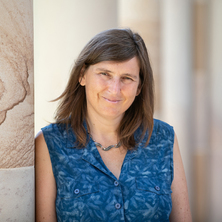Around 50 million people have been diagnosed with epilepsy around the world, including about 160,000 Australians.
Epilepsy is characterised by seizures, which are sudden uncontrolled electrical disturbances in the brain. These disturbances are due to groups of brain cells (neurons) firing excessively, which can be likened to a thunderstorm occurring in certain locations of the brain or the entire brain.
Depending on which neurons are involved, seizures can consist of uncontrolled abnormal movements and/or odd sensations and/or unconsciousness, which can last anywhere from a few seconds up to two minutes. Only certain body parts will show abnormal movements, such as jerking, twitching or stiffening, or there is an odd feeling, visual illusion, strange taste or short unconsciousness that can look like daydreaming or result in falling. If only certain parts of the brain are affected, people usually remain aware during a seizure.
However, seizures can also spread and affect larger areas of the brain, which can lead to abnormal movements that involve more muscles and/or limbs and potentially the whole body. If the whole brain is affected by a seizure, people become unaware, unresponsive and may fall. This can lead to serious injury and some people have drowned, burnt themselves during cooking and suffered accidents while showering. Recovery to normal brain activity can be slow.
Many people with epilepsy do not have warning signs before a seizure occurs. Typically, this makes high risk jobs and sports not possible, and driving is not allowed for people who have had a seizure within the past six months. Depending on the frequency, severity and duration of seizures, constant supervision and care may be needed.
However, many other people with epilepsy lead largely independent lives, have children, work and lead active lives. There are many examples, where people with epilepsy have had successful careers in sports, the arts and many other professions. Notable people with epilepsy include Australian former rugby league player and coach Wally Lewis and multiple Olympic Games and World Cup track cycling champion and medalist Marion Clignet.
There are more than 20 different medications available to prevent seizures and about 70 percent of people with epilepsy find seizure relief with medical treatment. However, 30 percent of people with epilepsy do not become seizure free and are still prone to severe injury and accidents, and may not be able to work and take care of themselves.
In a normally functioning brain, and specifically when the brain is active, a lot of energy is needed to fuel brain activity. Glucose is the main fuel for the brain and it’s needed to maintain ion and neurotransmitter balances to prevent seizures occurring. It is well known that in brain areas where seizures originate and spread, metabolism of glucose is impaired. In these brain areas, lack of glucose is thought to lead to energy deficits and derailment of ion and neurotransmitter balance(s), which can trigger excessive neuronal firing.
Medical ketogenic diets have been used for more than a century to treat epilepsy. These diets are relatively difficult to follow as they typically require severe restriction of carbohydrates and proteins, often in conjunction with reduced caloric intake. Under these conditions, blood glucose levels remain in the lower normal range and the liver produces ketone bodies, which are extra fuel for neurons in addition to glucose. Ketogenic diets are first line treatments for some childhood epilepsies and reduce seizures in about 50 percent of children with the condition. However, ketogenic diets do have undesirable side effects, such as hunger, lethargy, bone fractures, long term unsustainable weight loss in adults, and most people are unable to stick to them. This is why my research team is working to identify other improved metabolic treatments that can provide extra fuel to the brain where glucose metabolism is disturbed and seizures originate.
Medium chain triglycerides (MCTs) are a type of fat that is sometimes added to medical ketogenic diets for the treatment of epilepsy. Previous research by my research team has shown that MCTs added to normal diets can prevent seizures in seizure models. The findings show that after taking MCT, the body metabolises MCTs to two different auxiliary fuel types, namely ketones and medium chain fatty acids, which are taken up by the brain and provide extra energy.
As part of our current research, we are running a clinical trial, together with Professor Seung Bong Hong in Seoul, South Korea, to investigate whether adding MCT to a regular diet can prevent seizures. This research is funded by a grant from the Australia-Korea Foundation and monies from the Korean Government. The trial is being conducted at the Samsung Medical Center in Seoul and seeks to enrol 100 people with treatment-resistant epilepsy. It is our hope that our work will improve health outcomes for people living with epilepsy and improve their quality of life.
Please note: a doctor needs to be consulted to direct people with epilepsy to qualified dietitians for guidance about ketogenic diets or usage of more than a tablespoon (15 ml or 15 g) of MCTs per day. H high amounts of MCTs can have adverse effects, including diarrhoea, gastro-intestinal upset, nausea, and stomach cramping and may worsen or increase seizures.

Associate Professor Karin Borges is head of the Neurological Disorders and Metabolism Lab at the UQ School of Biomedical Sciences.
